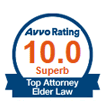The Alzheimer’s Association has issued its 2016 Alzheimer’s Disease Facts and Figures report. The report is “a statistical resource for U.S. data related to Alzheimer’s disease, the most common cause of dementia, as well as other dementias.”
Aside from providing a definition of Alzheimer’s disease (“Alzheimer’s disease is a degenerative brain disease and the most common cause of dementia. Dementia is characterized by a decline in memory, language, problem-solving and other cognitive skills that affects a person’s ability to perform everyday activities.”), the Facts and Figures report provides detailed information about the prevalence of Alzheimer’s disease and other dementias in the U.S., deaths from Alzheimer’s disease, impact of Alzheimer’s disease on caregivers, costs of health care, long-term care and hospice, and a special report on the personal financial impact of Alzheimer’s disease on families.
According to the report, an estimated 5.4 million Americans of all ages have Alzheimer’s disease in 2016. This number includes an estimated 5.2 million people age 65 and older, and approximately 200,000 individuals under age 65 who have younger-onset Alzheimer’s. One in nine people age 65 and older (11%) has Alzheimer’s disease. 81% of people who have Alzheimer’s disease are age 75 or older. More women than men have Alzheimer’s disease and other dementias; almost two-thirds of Americans with Alzheimer’s are women. According to the report, since the number of Americans surviving into their 80s, 90s and beyond is expected to grow dramatically due to medical advances, as well as social and environmental conditions, the numbers of new and existing cases of Alzheimer’s disease will grow rapidly too.
The report identifies age as the greatest risk factor for Alzheimer’s disease. Most people with Alzheimer’s disease are age 65 or older. People younger than 65 can have Alzheimer’s, but they are much less likely to develop the disease than older individuals. As age increases, so does the likelihood of having Alzheimer’s
The report also confirms that few individuals with Alzheimer’s disease and other dementias have sufficient long-term care insurance or can afford to pay out of pocket for long-term care services for as long as the services are needed. As a result, relatives and friends often provide care and financial support for family members and others with Alzheimer’s disease. Due to the substantial cost of care, both financially and emotionally, relatives and friends of people with dementia often jeopardize their own health and financial security to help pay for dementia-related costs.
The report recognizes that better solutions are needed to prepare families for the high out-of-pocket costs associated with Alzheimer’s disease and other dementias. In addition, the report advises individuals and families to become educated about the financial resources available to them and use that information to plan for the future. The report recommends that better education of Americans about the roles of Medicare, Medicaid and private insurance in paying for long-term care costs is needed. The following tips are offered:
- When planning for retirement, remember to think about how to prepare for the need for long-term medical care. After an Alzheimer’s diagnosis, your options may be more limited.
- Check with your employer to see what types of programs and benefits may be available to you.
- Conduct an inventory of your financial resources (savings, insurance, retirement benefits, government assistance, VA benefits, etc.). A financial planner or elder care attorney can help with this.
- Learn about Medicare and the expenses it covers.
- Learn about Medicaid and who is eligible.
- Investigate long-term care services (for example, home care, assisted living residences and nursing homes) in your area. Ask what types of insurance they accept and if they accept Medicaid in case you run out of money.
- Call the local Agency on Aging to determine what community services and support programs are available (for example, respite care, home maker services and Meals on Wheels) to help alleviate financial burdens.
- Once you understand your financial resources and what you can afford, make a plan for how to access care.
The 2016 Alzheimer’s Disease Facts and Figures report concludes as follows:
The costs of caring for a relative or friend with Alzheimer’s disease or another dementia can have striking effects on a household. These costs can jeopardize the ability to buy food, leading to food insecurity and increasing the risks of poor nutrition and hunger. In addition, the costs can make it more difficult for individuals and families to maintain their own health and financial security. Lack of knowledge about the roles of government assistance programs for older people and those with low income is common, leaving many families vulnerable to unexpected expenses associated with chronic conditions such as Alzheimer’s and other dementias. Better solutions are needed to ensure that relatives and friends of people with dementia are not jeopardizing their own health and financial security to help pay for dementia-related costs. (Emphasis Added)
The report is annexed here – 2016 Alzheimer’s Disease Facts and Figures report
For additional information concerning Medicaid and public benefits planning, visit: https://vanarellilaw.com/medicaid-public-benefits-planning/
Categories
- Affordable Care Act
- Alzheimer's Disease
- Arbitration
- Attorney Ethics
- Attorneys Fees
- Beneficiary Designations
- Blog Roundup and Highlights
- Blogs and Blogging
- Care Facilities
- Caregivers
- Cemetery
- Collaborative Family Law
- Conservatorships
- Consumer Fraud
- Contempt
- Contracts
- Defamation
- Developmental Disabilities
- Discovery
- Discrimination Laws
- Doctrine of Probable Intent
- Domestic Violence
- Elder Abuse
- Elder Law
- Elective Share
- End-of-Life Decisions
- Estate Administration
- Estate Litigation
- Estate Planning
- Events
- Family Law
- Fiduciary
- Financial Exploitation of the Elderly
- Funeral
- Future of the Legal Profession
- Geriatric Care Managers
- Governmental or Public Benefit Programs
- Guardianship
- Health Issues
- Housing for the Elderly and Disabled
- In Remembrance
- Insolvent Estates
- Institutional Liens
- Insurance
- Interesting New Cases
- Intestacy
- Law Firm News
- Law Firm Videos
- Law Practice Management / Development
- Lawyers and Lawyering
- Legal Capacity or Competancy
- Legal Malpractice
- Legal Rights of the Disabled
- Liens
- Litigation
- Mediation
- Medicaid Appeals
- Medicaid Applications
- Medicaid Planning
- Annuities
- Care Contracts
- Divorce
- Estate Recovery
- Family Part Non-Dissolution Support Orders
- Gifts
- Life Estates
- Loan repayments
- MMMNA
- Promissory Notes
- Qualified Income Trusts
- Spousal Refusal
- Transfers For Reasons Other Than To Qualify For Medicaid
- Transfers to "Caregiver" Child(ren)
- Transfers to Disabled Adult Children
- Trusts
- Undue Hardship Provision
- Multiple-Party Deposit Account Act
- New Cases
- New Laws
- News Briefs
- Newsletters
- Non-Probate Assets
- Nursing Facility Litigation
- Personal Achievements and Awards
- Personal Injury Lawsuits
- Probate
- Punitive Damages
- Reconsideration
- Retirement Benefits
- Reverse Mortgages
- Section 8 Housing
- Settlement of Litigation
- Social Media
- Special Education
- Special Needs Planning
- Surrogate Decision-Making
- Taxation
- Technology
- Texting
- Top Ten
- Trials
- Trustees
- Uncategorized
- Veterans Benefits
- Web Sites and the Internet
- Webinar
- Writing Intended To Be A Will







Vanarelli & Li, LLC on Social Media